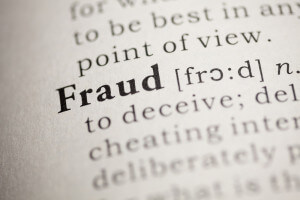Since AMC’s premier of Breaking Bad, many people have became intrigued with the criminal world and how criminal enterprises logistically function. Disguising their obscene wealth becomes a significant factor for the characters, and they purchase a car wash to use as a filter for their money. Their actions exemplify California Money Laundering at its most basic. The criminals use an intermediary to conceal the source of criminal funds in order to appear legitimate, thereby avoiding suspicion from law enforcement officials.
California law describes two distinct forms of money laundering. California State Penal Code 186.10 defines money laundering related to any type of crime. California State Health and Safety Code 11370.9 concerns money earned from drug crimes.
An example of money laundering under California State Penal Code 186.10 involves a married couple. The husband runs an illegal gambling ring on the weekends and brings home an average of $5,000 every week. During the week his wife consistently deposits the cash into their joint banking account. Although she never takes part in the illegal activity, she knows where the money came from. This is enough to convict a person of money laundering.
An example of money laundering under California State Health and Safety Code 11370.9 involves a successful drug dealer. Throughout the month he makes $30,000 by selling black tar heroin and cocaine. He uses the cash from drug sales to stock the registers of a fleet of food trucks that he owns. He uses the food trucks to conceal the source of the drug money, and thus can be convicted of money laundering.
The prosecution must prove three elements of the crime in order to convict someone of money laundering in the State of California.
- The individual conducted or attempted to conduct a transaction through a financial institution.
- The transaction met the minimum amount of money required by California state law.
- $5,000 over a 7-Day period or $25,000 over a 30 day period
- The individual took part in the financial transactions to promote illegal activity.
The State of California can convict people of money laundering whether or not they were involved with the other illegal activities that generated the funds.
California law considers both forms of money laundering as wobblers. meaning the prosecution may pursue misdemeanor or felony charges for money laundering. The charges depend on the defendant’s criminal history as well as on the facts of the case.
Misdemeanor penalties can include jail time of up to one year, and fines of up to $1,000.
Felony penalties include jail sentences of from 16 months to four years, and fines of up to $250,000, or twice the amount of money laundered, whichever sum is greater.
History of Money Laundering
Al Capone arguably ran the most successful organized crime ring in the United States during the prohibition era. Although he earned upwards of 100 million dollars annually through bootlegging, extortion, prostitution, and illegal gambling, the authorities could not find the money. Capone invested in cash-only laundromats as a way to obscure the source of his financial gains, thereby coining the phrase “money laundering.”
Currently, the term refers to any process that “cleans” criminally attained funds of their illicit origins. This process allows the funds to be used legally.
While Capone’s actions coined the term “money laundering,” the practice has been around as long as money has existed.
The three integral steps of money laundering involve placement, layering, and integration.
Placement involves converting illegally obtained money into assets that seem legitimate. The practice could involve an individual depositing funds into a bank account of a separate entity. The separate entity then functions as a middleman between the criminal money and legitimate spending.
Layering involves using a multitude of transactions in order to distance the funds from their criminal origins. The practice could involve multiple transfers across multiple accounts, or the purchase of tangible property. Basically, layering disguises the money’s source.
Integration allows the money to reenter the mainstream economy. Moreover, it benefits the original owner. The owner can invest the money in legitimate businesses and produce fake invoices to further mask the origin of the money.
Prior to 1986, the federal government did not recognize money laundering as an independent crime. Federal prosecutors needed to link money laundering to a separate crime, such as tax evasion in the Al Capone case. However, the Money Laundering Control Act of 1986 permanently outlawed money laundering as an individual crime.
The Money Laundering Control Act of 1986 began to crack down on money obtained from transporting and selling illegal drugs. Drug trafficking often occurred through large-scale organized crime rings. However, low-level workers handled the actual transportation and sale of the drugs while crime ring leaders were able to keep the profits.
The money laundering Control Act of 1986 allowed prosecutors to charge drug bosses for merely handling the money attained through illicit activity.
Defining California Money Laundering
Understanding the various terms used in California law pertaining to money laundering can facilitate an understanding of the crime and it’s definition.
California State Juror Instructions 2997, Money Laundering, provides the following explanations:
“Financial institution” means any national bank or banking institution located or doing business in the State of California.
A “transaction” includes the deposit, withdrawal, transfer, or bailment, loan, pledge, payment, or exchange of currency or a monetary instrument, or the electronic, wire, magnetic, or manual transfer of funds between accounts by, through, or to, a financial institution.
A “monetary instrument” means money of the United States of America, or of any other separate entity
“Criminal activity” means a criminal offense punishable under the laws of the State of California by death or imprisonment in the state prison, or a criminal offense committed in another jurisdiction which, under the laws of that jurisdiction, is punishable by death or imprisonment for a term exceeding one year.
A “foreign bank draft” means a bank draft or check issued or made out by a foreign bank, savings and loan, casa de cambio, credit union, currency dealer or exchanger, check cashing business, money transmitter, insurance company, investment or private bank, or any other foreign financial institution that provides similar financial services, on an account in the name of the foreign bank or foreign financial institution held at a bank or other financial institution located in the United States or a territory of the United States.
California State Penal Code 186.10
California State Penal Code 186.10 defines general money laundering as:
Conducting or attempting to conduct, a transaction through a financial institution.
The transaction or series of transactions through the financial institution must add up to a total value of more than $5,000 over a 7-Day period, or more than $25,000 over a 30-day period.
The individual must conduct the transactions:
– in a deliberate attempt to promote criminal activity
– with the knowledge that the funds originally came from illegal activity
Example
An example of General money laundering involves Jan. Jan runs a brothel and makes $1,500 a day. Every Monday and Thursday she deposits $4,500 into the same bank account. The State of California could convict Jan of general money laundering. Even though she never attempted to conceal the origin of the funds, she did make multiple deposits within a seven-day period totaling more than $5,000. The money came from an illegal source.
However, the prosecution must prove the defendant intended to support criminal activity.
Another example involves Ryan and Kelly. Ryan and Kelly began dating years ago. Ryan explains to Kelly that he wants to start a business, but needs start up money. Kelly gives Ryan $15,000 as an investment for what she believes to be equity in a legitimate business. However, Ryan uses the money to start a meth lab.
Kelly did not know that her money would be used to finance criminal activity involving controlled substances. She therefore cannot be convicted of money laundering.
California Health and Safety Code 11370.9
California Health and Safety Code 11370.9 describes money laundering in connection with controlled substance crimes.
The prosecution must prove three things in order to convict an individual of money laundering in connection with controlled substance crimes.
- The individual received, acquired, or engaged in financial transactions involving money or tangible property that he or she understood to have resulted from a controlled substance offense.
- He or she did so to conceal or disguise the source, ownership, or control of the money.
- The amount of money laundered totaled more than $25,000 over a 30-day period.
Illustrative Examples
Example A.
Michael sells cocaine. One week he deposits $10,000 into a single bank account. He intends to use that drug money to pay his living expenses over the next two months.
Under California State Health and Safety Code 11370.9, Michael cannot be convicted for two reasons. First, he did not attempt to conceal the origin of the money that he deposited into a bank. Second, he only deposited $10,000, which is less than the required amount of $25,000.
However he may very well be charged under California State Penal Code 186.10.
Michael made a deposit to a bank account that totaled more than $5,000, and he understood the money came from criminal activity.
Example B.
A related example involves Michael and his cocaine business. Over the next month, Michael sells $40,000 worth of cocaine, and now has $40,000 in cash. Michael understands the inherent risk of carrying that much cash. However, he also knows that he cannot deposit $40,000 of illegal money into a bank account.
Michael makes a deal with his friend Scott. Scott owns a pawn shop, and can use the cash to stock the register. Michael agrees to give Scott $40,000 in cash. In return, Scott will give Michael $40,000 in the equity of his pawn shop.
The prosecution could not charge Michael under California State Penal Code 186.10 because he never made a transaction through a financial institution.
The prosecution could charge Michael under Health and Safety Code 11370.9 because he engaged in financial transactions designed to hide the origin of illegal money derived from a drug crime. Plus, the total amount of money totaled more than $25,000.
Example C.
Yet another way money laundering can be conducted is exemplified by Michael’s cocaine business. After selling $40,000 worth of cocaine, he recognizes that he needs to get rid of the cash. On January 1st, he approaches a gold dealer and purchases $20,000 in gold. On February 19th, he spends the other $20,000 on gold from the same gold dealer.
Although Michael engaged in transactions designed to conceal the origin of his cocaine money, he could not be convicted of money laundering.
Michael only purchased $20,000 in one month, and his transactions never totaled more than $25,000 in a 30 day period. Therefore, Michael cannot be convicted under Health and Safety Code 11370.9.
Michael also cannot be convicted under Penal Code 186.10 because the transactions involved a gold dealer, and not a financial institution.
Penalties of California Money Laundering
The State of California considers both forms of money laundering to be wobblers. This means the prosecution may pursue either misdemeanor or felony charges for money laundering depending on the defendant’s criminal history, and on the specific facts of the case.
Misdemeanor penalties for either form of money laundering include the following:
- Up to one year in county jail
- Fines of up to $1,000
The felony penalties for Penal Code 186.10, General Money Laundering, include the following:
- Jail time of from 16 months to 3 years
- Fines of up to $250,000 or twice the amount of money laundered, whichever sum is greater
- The maximum fines increase if the defendant has any prior money laundering convictions.
- The maximum prison sentence increases if the total amount of money laundered is more than $50,000.
The felony penalties under California State Health and Safety Code 11370.9, Controlled Substances Money Laundering, include:
- Prison sentences of from 2 to 4 years
- Fines of up to $250,000, or twice the amount of money laundered, whichever sum is greater
Understanding Money Laundering in California
Money laundering covers any process designed to obscure the origin of illicitly obtained money.
The State of California recognizes two forms of money laundering. Penal Code 186.10 concerns money laundering related to any type of criminal activity, while Health and Safety Code 11370.9 pertains to money laundering related to any drug crime.
The State of California considers both crimes to be wobblers. Consequently, the prosecution can pursue either felony or misdemeanor charges.
The misdemeanor penalties include county jail time of up to one year, and fines of up to $1,000.
On the other hand, felony money laundering charges include penalties of from 16 months to four years in prison, as well as fines of up to $250,000, or twice the amount of money laundered, depending on which sum is greater.
Defending Against Money Laundering Charges in California
Regardless of the money laundering charge, experienced criminal defense attorneys can mount the most effective legal defenses.
Money laundering convictions under Penal Code 186.10 require both intent and knowledge. Experienced defense attorneys can show that the defendant neither intended to promote criminal activity, nor understood that the money came from criminal activity.
Because conviction under Health and Safety Code 11370.9 requires an intent to hide the source or owner of drug proceeds, the prosecution must prove that the defendant both knew the source of the funds, and intended to hide it.
The amount of money laundered determines whether the prosecution can pursue money laundering charges. If the defendant did not make his transactions with the required amount of money as defined by law, he or she may not be convicted of money laundering.
One of the most important factors of any criminal charge pertains to police behavior. An experienced criminal defense attorney can examine the timeline, research the situation, and accurately understand the series of events. If the defense attorney discovers police misconduct, such as illegal searches or seizures, then all evidence against the defendant becomes inadmissible.
Working with an aggressive defense attorney can lead to the most successful outcome for defendants accused of money laundering crimes.














